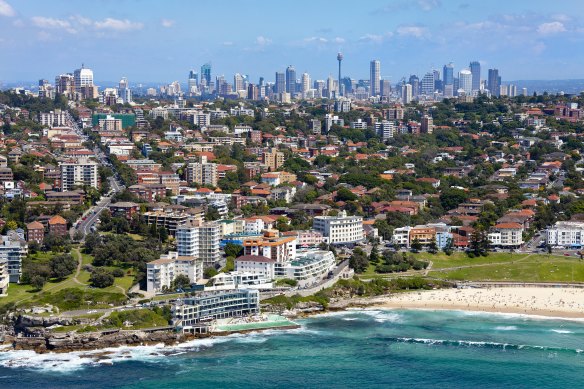This was published 1 year ago
Editorial
Income inequality a sleeper issue that threatens our egalitarian ethos
The rising cost of living is a grim reality and a growing political issue, but the disparity between incomes is turning Sydney into a tale of two cities. Top earners are more concentrated in the eastern suburbs, the inner city and the inner west, while western suburbs workers languish in relative poverty.
The highest average personal incomes in the east are hovering above $200,000 a year while some 12 neighbourhoods in western Sydney have average personal incomes below $50,000.

The top 1 per cent of earners in Sydney snare more than 12 per cent of all personal income.Credit: Mark Merton
The Herald’s Matt Wade and Craig Butt have shown how Sydney is now Australia’s most unequal capital city, with the average personal income in our best-paid suburbs almost five times higher than the lowest. The top 1 per cent of earners receive 12.2 per cent of all personal income, up from 11.7 per cent the previous year. Nationally, the top 1 per cent accounted for 9.8 per cent of personal income.
Over the decade to 2020-21, analysis of personal income by the Australian Bureau of Statistics reveals the top 1 per cent took a bigger share of earnings in Sydney’s eastern suburbs – 20.2 per cent – up 2.1 percentage points. The top 10 per cent of earners in the east now takes home 48.1 per cent of all income (up from 46.5 per cent a decade ago).
The Ryde region had the city’s biggest increase in earnings, up 2.5 percentage points to 14.2 per cent. In the inner west, the 1 per cent’s share climbed from 10.3 per cent to 11.3 per cent in the decade.
But across much of western Sydney, the share of income accruing to the top 1 per cent of earners was largely unchanged. In the Blacktown district, the top 1 per cent earned only 4.7 per cent of all income in 2020-21, the lowest share of any Sydney region (up 0.2 percentage points over the decade).
Disparities in income can become almost self-fulfilling, and as the better-heeled cluster in the inner city and eastern suburbs, their ever-increasing incomes drive up property prices and drive out residents with lower or stagnant earnings.
Terry Rawnsley, an urban economist at KPMG, said structural changes in Sydney’s economy, especially the boom in knowledge intensive services such as finance, had led to those businesses clustering in and around Sydney’s CBD, which meant more income accumulated in those areas while also building a higher income concentration in Sydney compared to other parts of the country.
“The bulk of ASX 200 companies are based there, and it’s a big financial and insurance hub for the Asia-Pacific, so you’ve got a lot of very high-paying jobs in Sydney,” he said. “You just don’t find as many of those jobs in, say, Adelaide, Perth or Brisbane.”
While it is true it may be the best of times for some, it is the worst of times for others. For people on $200,000-plus, provided they have not overreached on financial commitments, their ability to absorb a percentage point rise on interest rates or more costly power bills should not make much difference. But for western Sydney residents on $40,000-plus a year, rises in the cost of living could be life changing and mean the difference between putting a meal on the table or going without.
The cost of living is shaping as a major issue in the federal election. The Albanese government’s options to relieve pressures on living standards are limited. Its reshaping of the stage 3 tax cuts was a start, but both state and federal governments must look at policies that, on the big picture, distribute incomes better, and, on a micro level, provide support for those doing it tough. The last thing cities such as Sydney need is entrenched and worsening concentration of wealth, with large sections of the population simply left behind.
The Opinion newsletter is a weekly wrap of views that will challenge, champion and inform your own. Sign up here.